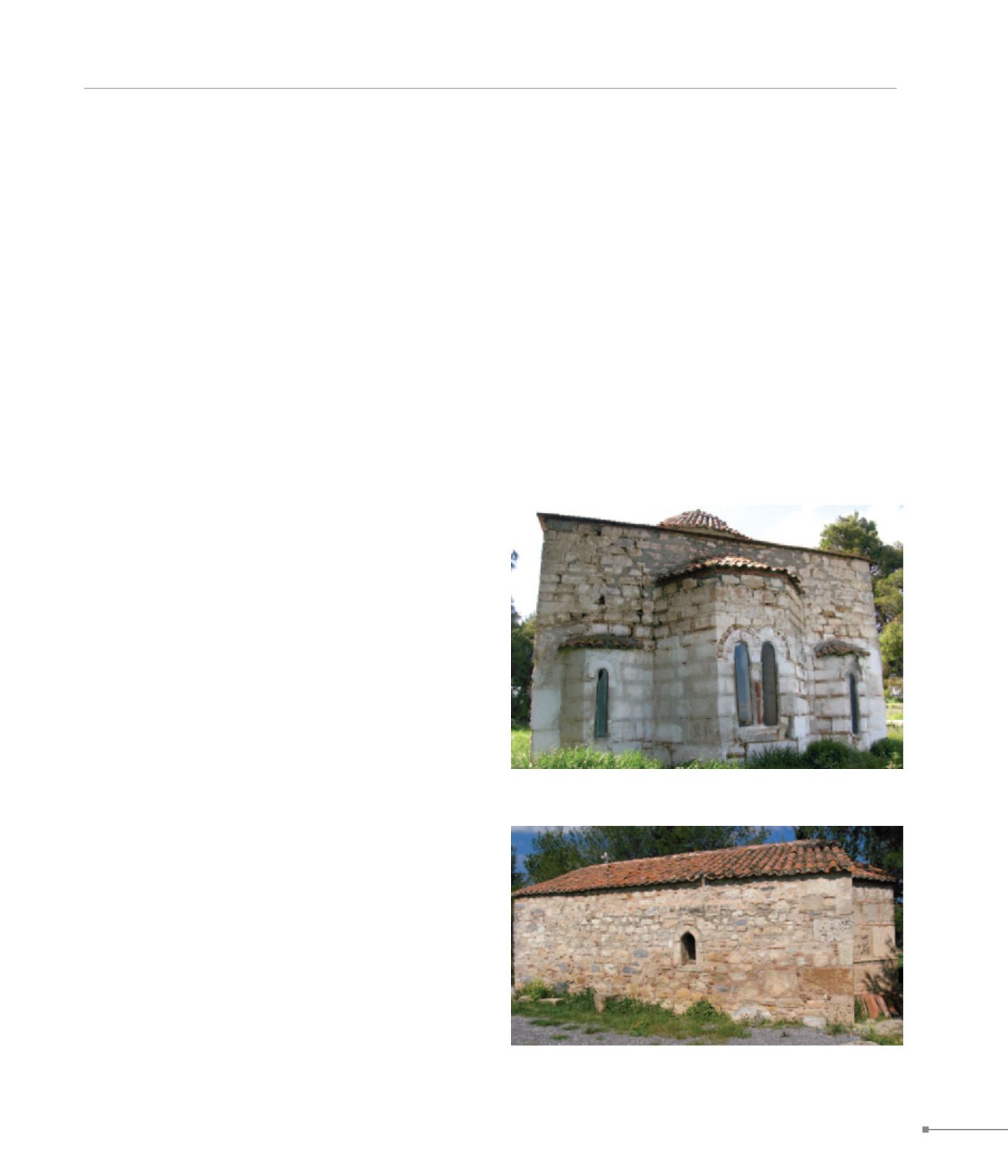
Kallithea.
Tanagra.
CENTRAL GREECE
187
231. Tanagra, Aghios Polycarpos (Τανάγρα, Άγιος Πολύκαρπος)
230. Tanagra, Aghios Thomas (Τανάγρα, Άγιος Θωμάς)
of Ioannis Kaloktenis, Metropolitan of Thebes, may possibly
be identified with the church detected near the modern Aghios
Ioannis Kaloktenis, which has a wall-painting of Palm Sunday.
Also remarkable is the large church with traces of wall-paint-
ings near the modern Aghia Eleousa, as well as an unnamed
church (10th c.) within Kadmeia. A church of the late 9th-early
10th c. has also been pinpointed at the site of the Thebes
Cultural Centre. It is likely that the remains located near the
modern church of the Koimesis of the Theotokos belong to
the Frankish metropolitan church of Panagia Loggia.
In the region of Thebes, outside Kadmeia, of particular inter-
est are: the church of Aghia Photeine (12th c.), of the domed
free cross plan type; the unnamed church near the Kastellia
hills (12th-15th c.), the aisleless church of Saint Nicholas near
the present-day courthouse of Thebes (12th c.); and a Mid-
Byzantine church with underground funerary chapel nearby.
Additionally, the aisleless church of Saint Nicholas or Aghia
Paraskevi (11th c.) at Kanavari, which was transformed into a
three-aisled church in the late 13th-early 14th c.; the unnamed
church of the domed free cross plan type at Aghioi Theodoroi
(12th c.); and a three-aisled basilica, found at Moschopodi,
possibly of the 12th c.; all these are significant. A plethora of
sculptures and architectural elements, mainly from religious
buildings of the same period, have been gathered together in
the courtyard of the Thebes Archaeological Museum.
Excavations in Thebes have uncovered the aqueduct con-
structed in the 12th c. by Metropolitan Ioannis Kaloktenis, as
well as stone-paved streets and rich remains of Byzantine or
Frankish houses extending all over Kadmeia and outside of
it. The cemeteries are located around Christian churches, the
most important E of Kadmeia. From the Frankish buildings
survive the remnants (recently enhanced) of a luxurious pal-
ace built by Duke Nicholas II of Saint Omer in the centre of
Kadmeia.
229.
Kallithea.
At the Metochi site, NW of Kallithea village, remains of build-
ings have been detected, mostly of the Early Christian and
Byzantine periods. Mycenaean chamber tombs in the area
were reused for burials in Early Christian times.
230.
Aghios Thomas Tanagras.
On the right bank of the river Asopos, near the acropolis of
ancient Tanagra, 3.5 km from the village, is the domed, two-
columned, cross-in-square church of Saint Thomas (mid-11th
c.) with kufic ornaments on the masonry.
231.
Tanagra.
The ancient city, which was an archbishop’s seat in the 4th
c., was located on Grimada, a low hill that is an extension of
Mount Soros, at the edge of the river Asopos. The city’s walls
were reinforced in the 3rd-4th c., the city was inhabited until the
7th c. (with the area within the fortification mostly occupied),
but the citadel was deserted in the 7th c. Excavations in 1890
revealed foundations of a basilica with a mosaic floor on the
upper part of the citadel. A recent surface and magnetometric
survey of the city revealed at least three basilicas. Their archi-


